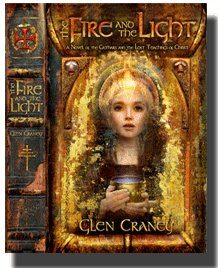
4. The British psychiatrist and researcher Arthur Guirdham suggested that the Cathars were, in essence, Western Buddhists. Discuss and compare the beliefs of Catharism with the tenets of Buddhism.
5. Discuss why the sack of Constantinople in 1204 was a pivotal event in the history of Christianity.
6. How do gnostic and orthodox Christianity differ? What inherent aspect of gnosticism has condemned it to be repeatedly repressed and defeated by the Church throughout history?
7. In The Da Vinci Code, a secret sect schemes to preserve a royal Jewish bloodline that runs from Jesus and Mary Magdalene. The Cathars are sometimes mentioned as one of the groups that may have helped preserve this secret. From what you have learned about their beliefs, discuss whether the Cathars would have been interested in perpetuating a worldy bloodline. From the Cathar perspective, what might instead have been symbolized by the Holy Grail?
8. Were the Cathars the first Protestants? Discuss similarities and differences between the Cathars and the Protestants of the Reformation several centuries later.
9. The Sufi poet Rumi said: The faithful are many, but the faith is one. What do you think he meant by this enigmatic statement? How does it inform religious strife in today’s world?
2. Most historians agree that the Roman Church reached its pinnacle of power during the reign of Pope Innocent III. Yet, despite its consolidation of clerical authority, the Church was beset by a host of heresies, most notably Catharism. What developments in the Church allowed the pacifist Cathars to flourish at this time in history?

